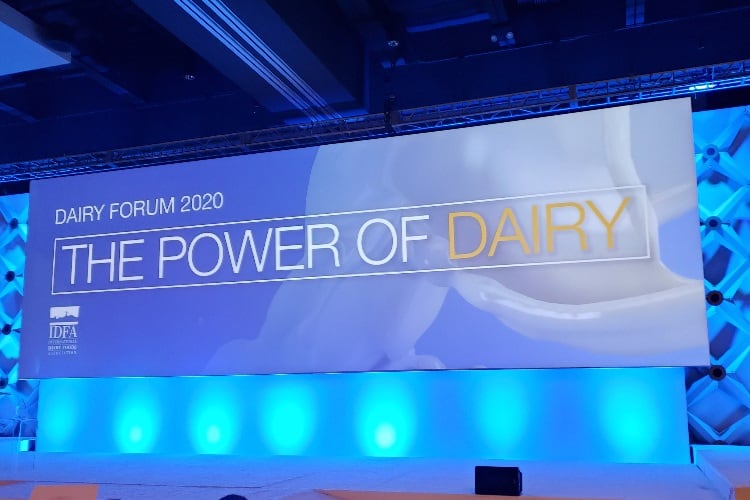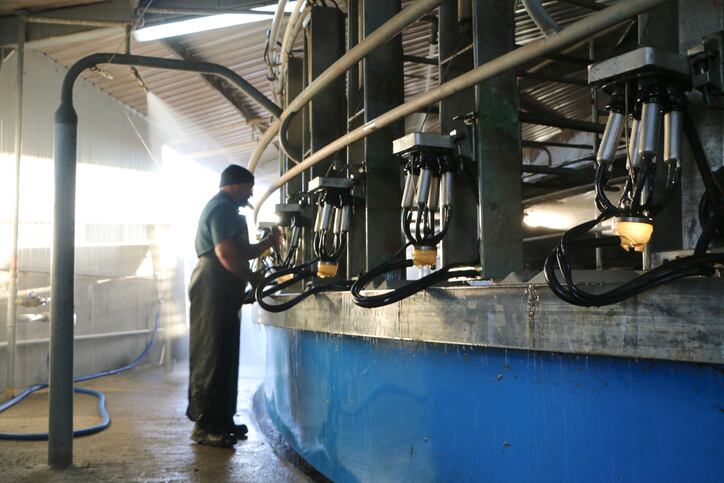In the last 15 years, US dairy product exports have tripled, making the US the world’s third-largest dairy exporter behind New Zealand and the EU. But the industry still struggles against volatile trade wars, low prices and alternative competitors.
Since November, fluid milk companies Dean Foods and Borden Dairy both filed for bankruptcy, and fairlife sold to the Coca-Cola Company. At the IDFA Forum, Dykes said the financial deals have left the industry with a lot of questions about the future.
“We will see more change in the next five years than anything we’ve experienced over the last 15 years. We will continue to see consolidation across our industry,” he said.
There are currently multiple bidders up for the purchase of Dean Foods, and an update on the transaction is expected in February.
Embracing change and ag tech
But despite the bankruptcies, consumer confidence in dairy is at an all-time high. Dykes believes there has been a false narrative that the past decade has been bad for dairy, when in fact the opposite is true.
“I sense we’re at a new time in dairy. And I think producers and processors are beginning to trust each other more. I think they’re beginning to think about the long term viability of the industry,” he said.
Dykes noted that total per capita dairy consumption is up 6%, but that people don’t consume dairy the same way anymore. Fluid milk consumption is undeniably down; people are eating dairy more than they are drinking it. They gravitate to snacks and drinks with added benefits.
“The future is in innovation. We must continue to innovate to stay ahead and remain on the consumer’s shopping list,” Dykes said.
He pointed to filtered milks like fairlife and Darigold Fit, shelf-stable chocolate milk from Slate and grab-and-go cheese snacks from Sargento as successful dairy product innovations that should be used as examples moving forward.
“We aren’t going to stop change, and we aren’t going to stop technology. The question is, how are we going to embrace it and what are we going to do with it?” he asked.
Farmers should continue focusing on increasing output with new technology, improved genetics, responsible cow treatment and sustainable natural resource use. Smart sensors, robotics and advancements in plant and animal genomics have already begun to change food and agricultural production.
Already, US dairy is producing twice as much milk today as 50 years ago, with half as many dairy cows on less land. Dykes said that milk production has grown 51% in the last 30 years while CO2 output has declined 9%.
Power in diversity and succession
The US dairy export market grew to a value of $5.5bn in 2018, and 2019 is projected to surpass that. The total output by 2028 is estimated to be another 15%, according to USDA, which equates to about 33bn pounds of milk.
Dykes said that tackling that amount comes down to creating new products that consumers want and creating opportunities to grow exports. IDFA is putting a strong focus on trade this year, in light of the recent deals signed with China, Japan, Canada and Mexico.
China represents a $23bn market for US dairy products in the future, according to IDFA, and Dykes encouraged those in dairy to make their voices heard with local representatives regarding trade policy.
“We must have a broad, diverse, more urban coalition that can influence policymakers in this changing demographic landscape,” Dykes said.
To advocate for a healthy dairy industry, he called it the dairy industry’s responsibility to “communicate with policymakers often, offer guidance and support, and bring them into the conversation so they see the jobs, the innovation, and the impact in their states and districts.”
Within the industry itself, Dykes spoke of the importance of increasing diversity, noting the success of IDFA’s recently launched Women In Dairy Network. The organization is also considering long-term succession plans for next-gen dairy executives.
“We’re going to have a huge turnover in this industry and we need to make sure we’re preparing leaders, because one thing that’s for sure is that we’re all only passing through here,” he said.
“Dairy must evolve from a fluid commodity business chasing declining volumes and serving a handful of staples, to a value-added business meeting the needs of people everywhere. In other words, we need to shift to making what we can sell, rather than continuing to attempt to sell what we make.”




